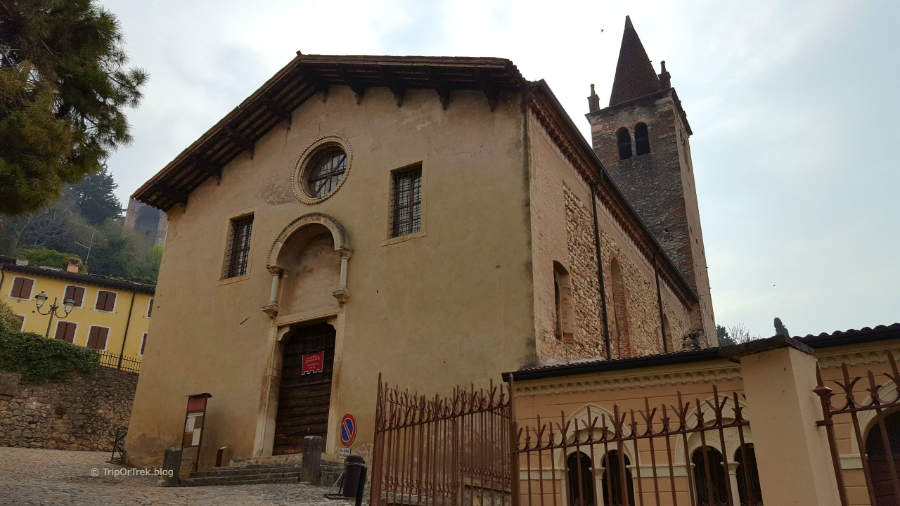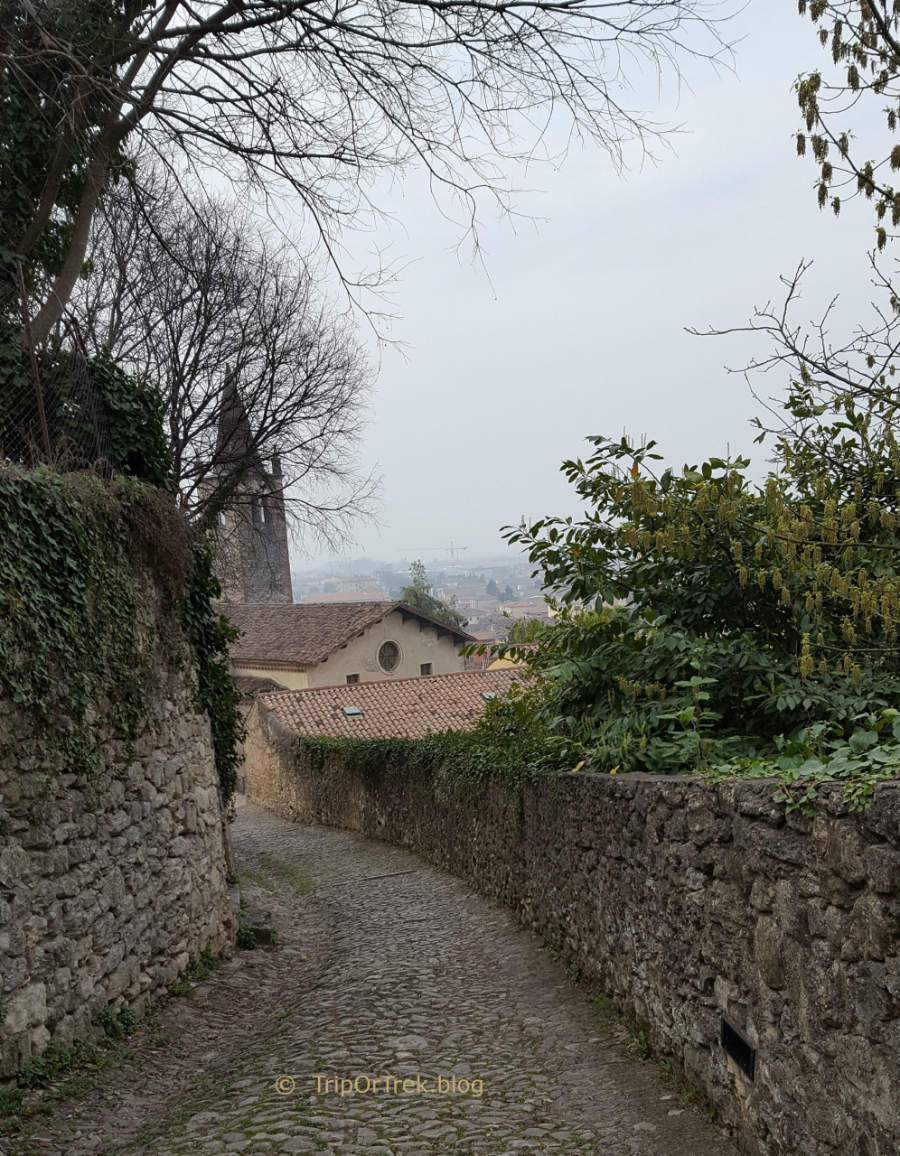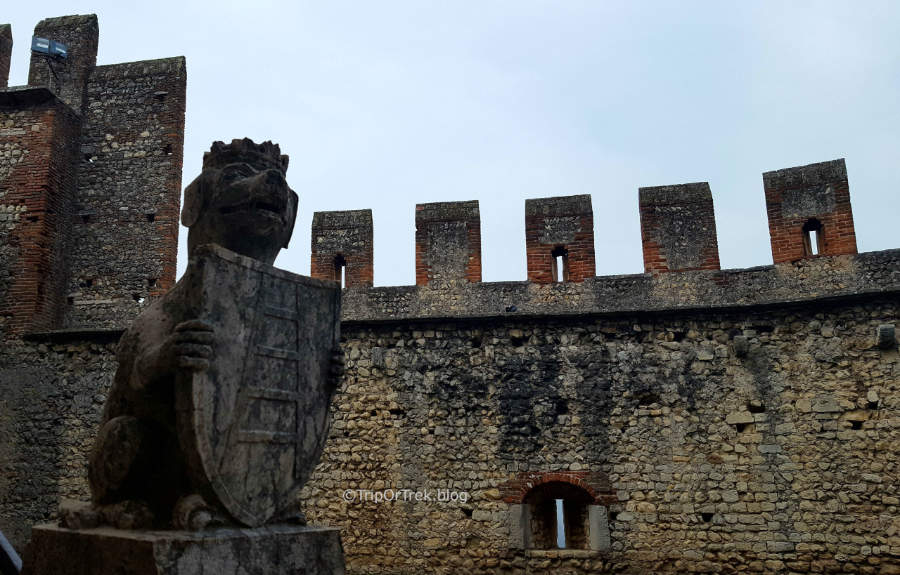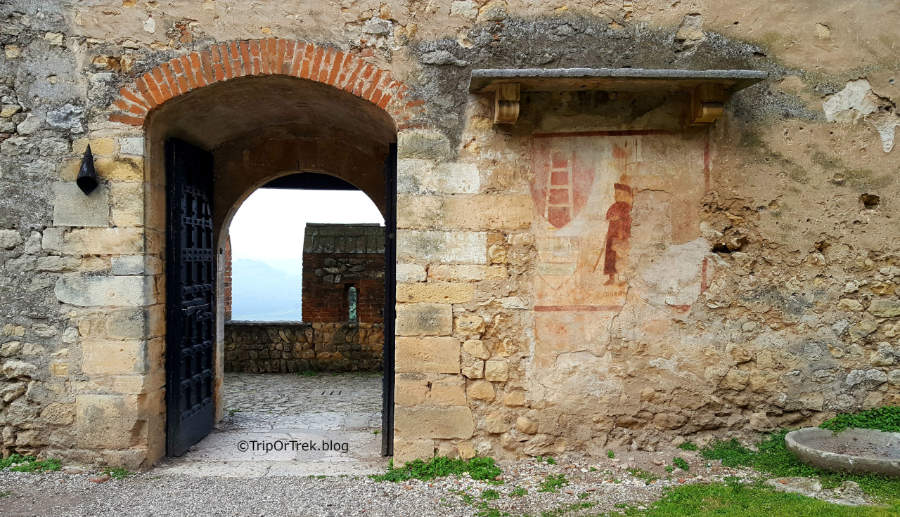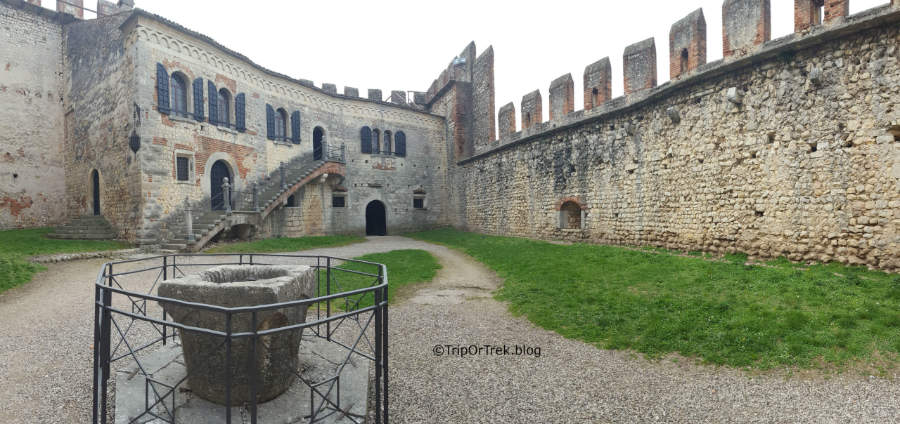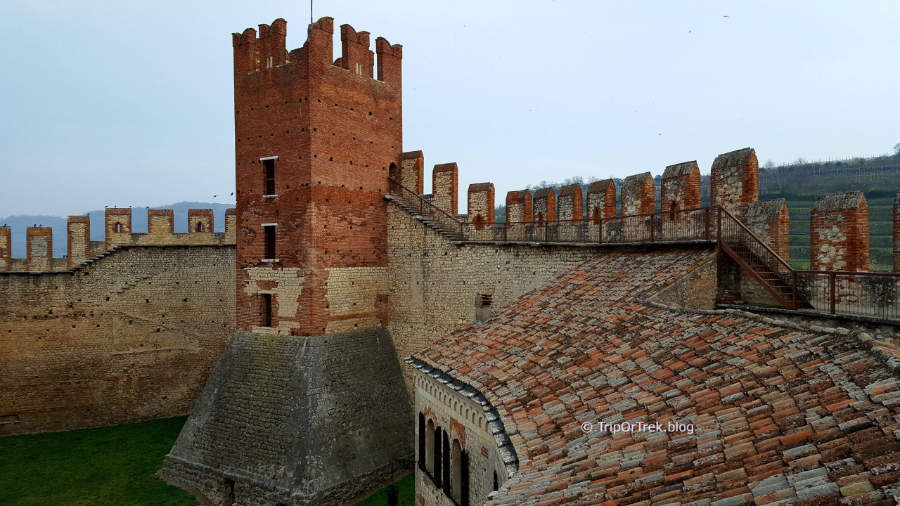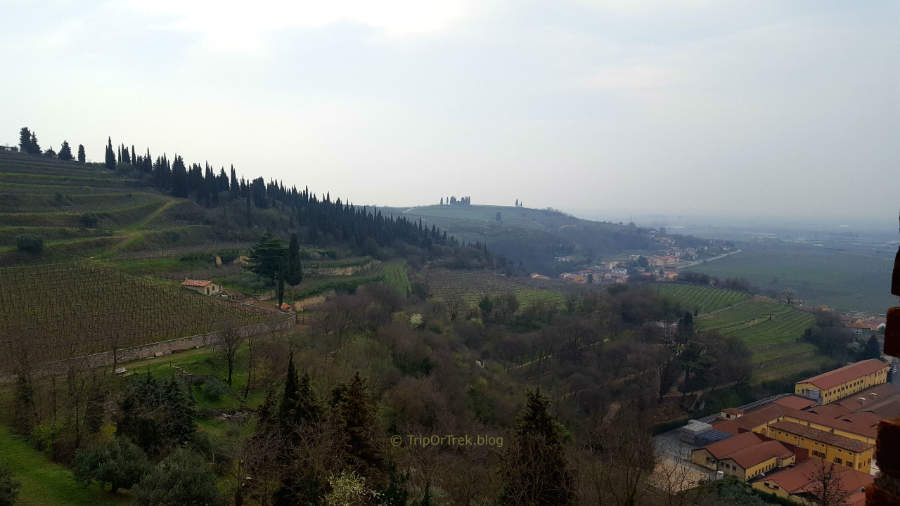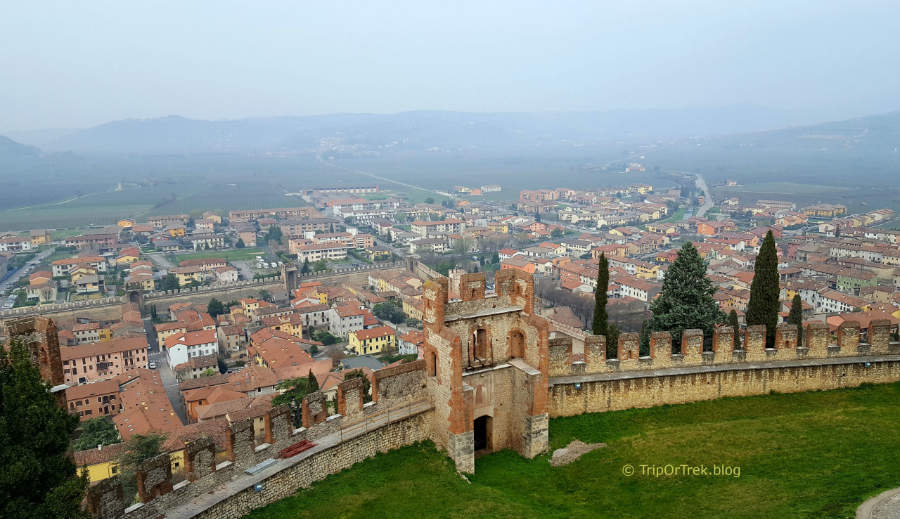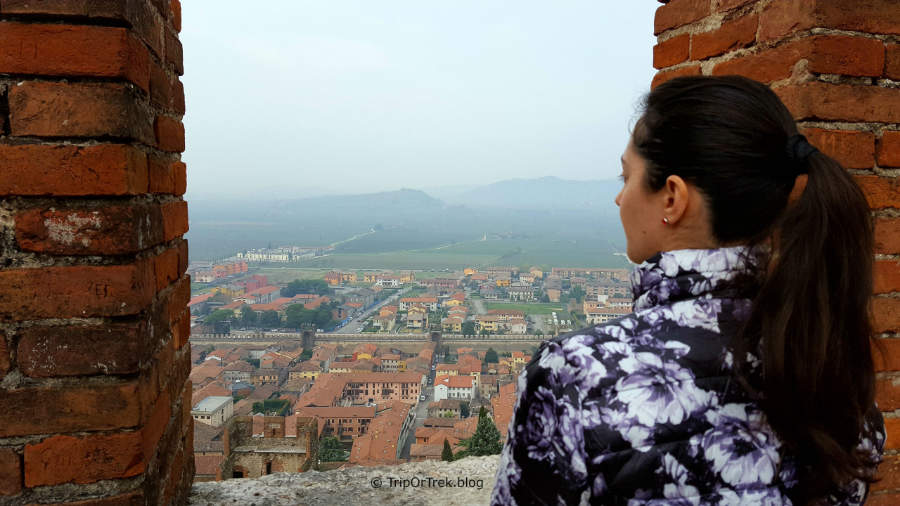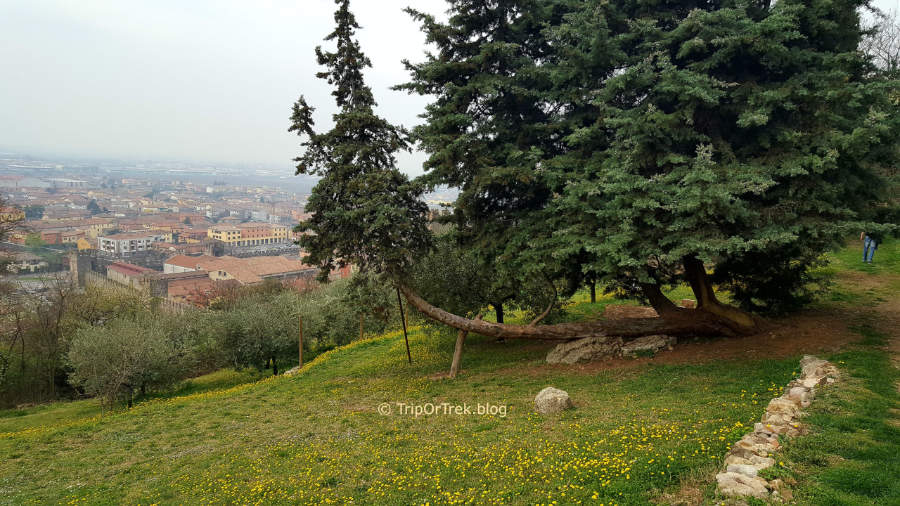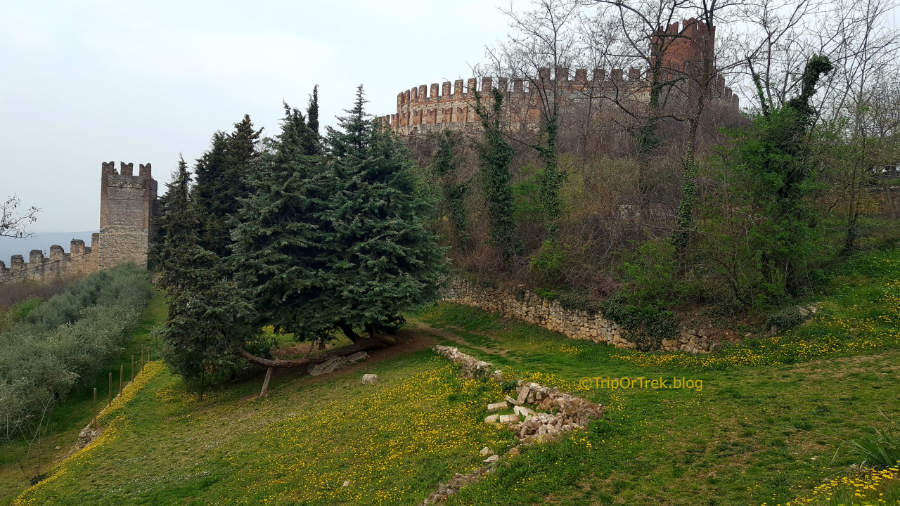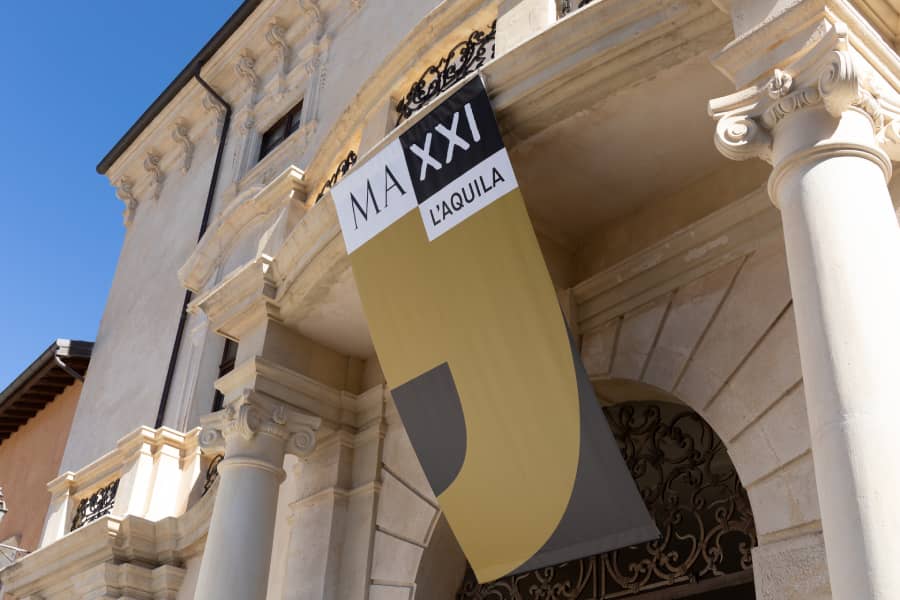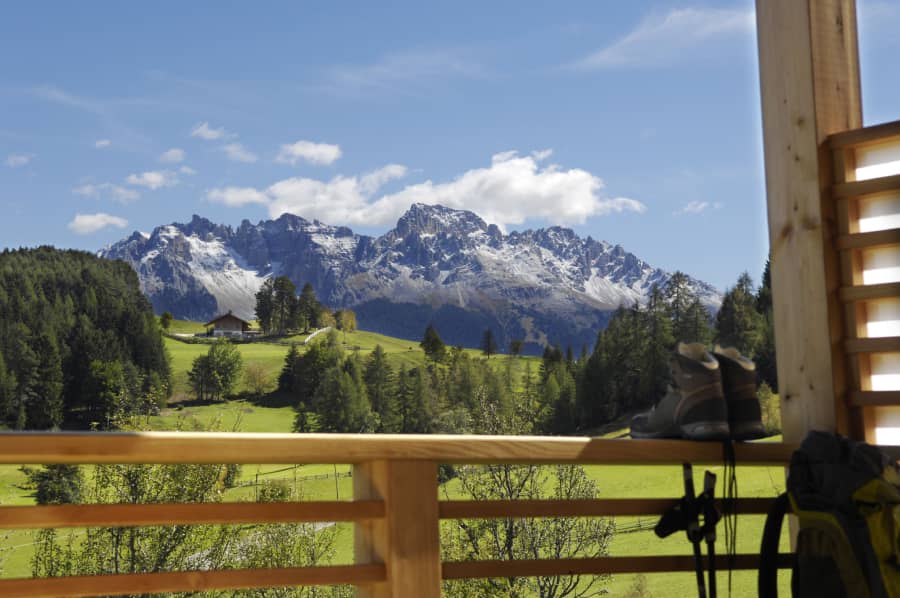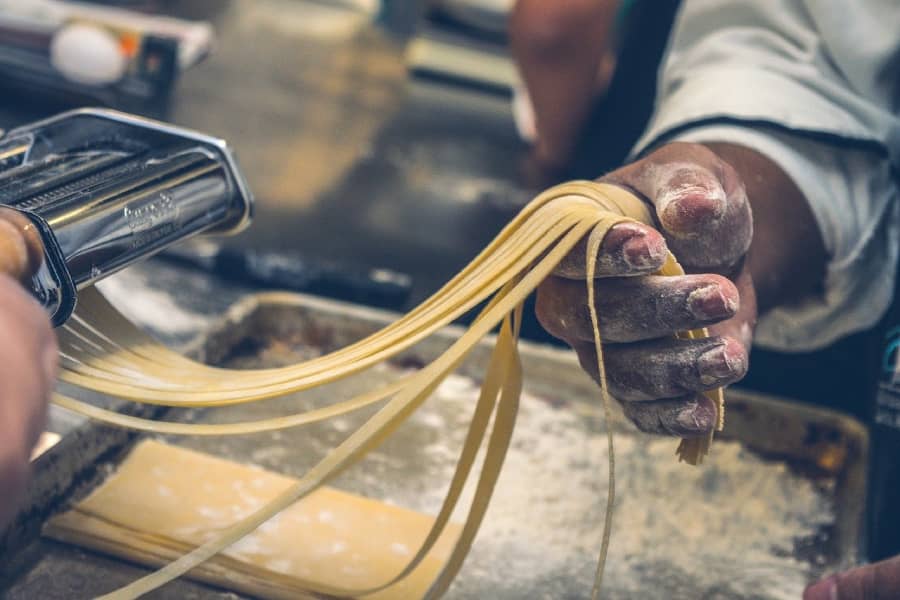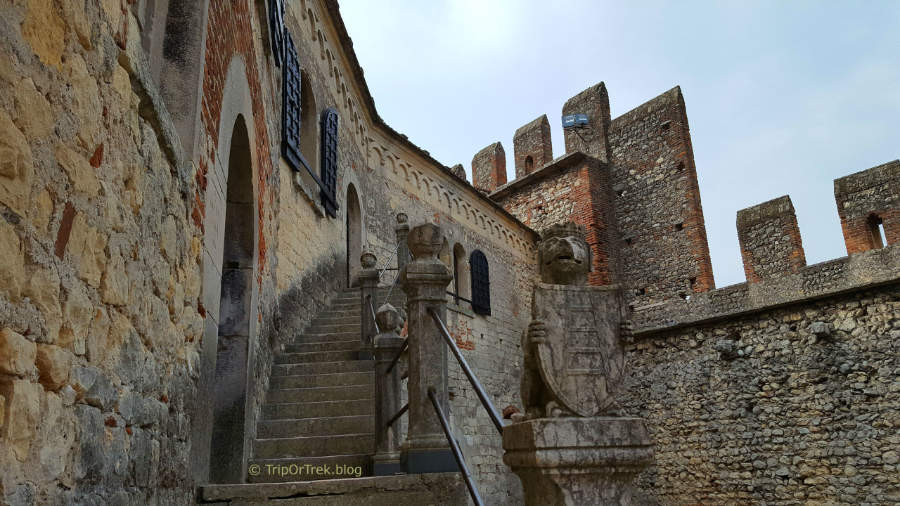
Nestled among rolling hills covered with vineyards that producing golden grapes with a delicate flavor, Soave, a town in the province of Verona, is a charming village which hosts, among its alleys, the signs of a glorious medieval past. A mighty wall encloses the historical center, while, on top of a hill, stands an imposing austere castle.
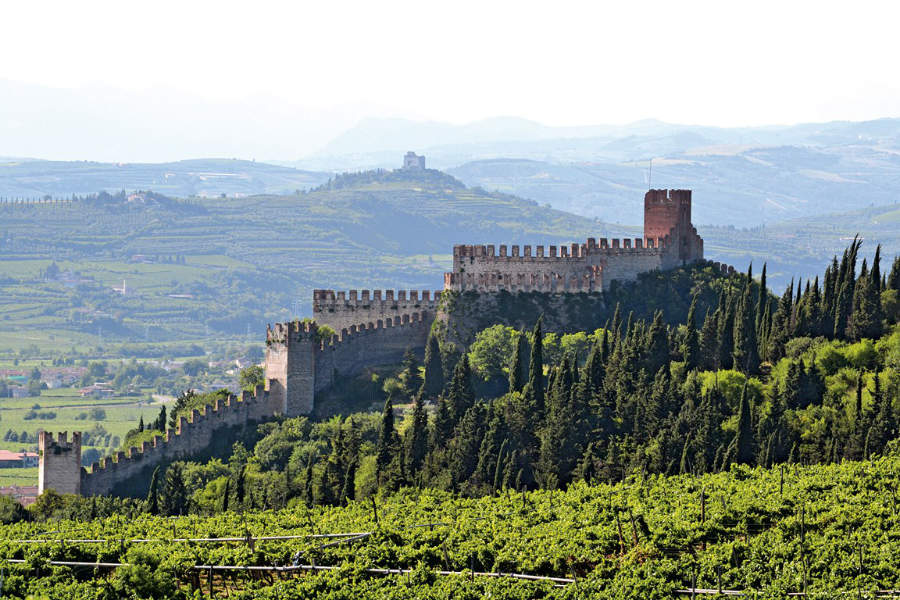
To get to the castle, I recommend the walk, which, starting from Antenna square in the heart of the town, will lead you through an old mule track to the entrance of the imposing castle. Along the way you can admire not only the courthouse, built between April and July 1375 at the behest of Cansignorio della Scala and which today houses a wine cellar where you can taste excellent wines, but also the church of Santa Maria di Monte Santo of the Dominican fathers, built in 1443 in Lombard style which now houses art exhibitions and concerts.
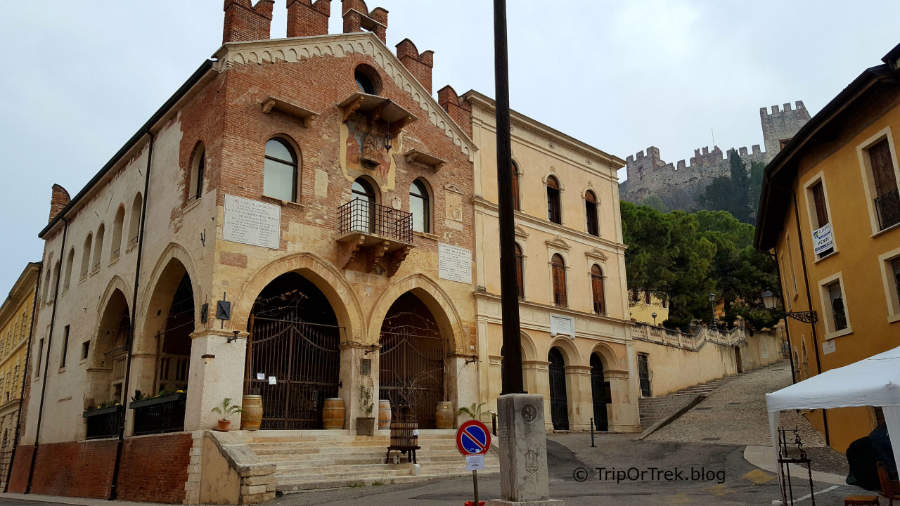
HISTORY OF THE CASTLE
Established in a strategic position from which you could admire the surrounding plain, the fortress was built at the beginning of the tenth century, at the time of the invasions of the Hungarians, for the initiative of Berengario I, King of Italy. The first feudal lords were the Sambonifacio who held the castle until the beginning of the thirteenth century.
In 1226 the fort passed through the hands of Ezzelino Romano, to become, in 1237, owned by the feudal family Greppi. Its importance, however, grew up under the dominion of the Scala family: Cansignorio restored it in 1369, and in 1375 strengthened the castle with the construction of the great wall which surrounds the town.With the fall of the Signoria Scaligera in 1387, the castle passed into the possession of Gian Galeazzo Visconti, Lord of Milan, who laid there as his representative, Balzarino from Pusterla.
The fight for the possession of this stronghold, however, didn’t stop for a moment: assaults and bloody clashes continued on over time without rest. In 1696 the castle, step in the hands of the noble Francesco Gritti and then to his heirs from which, in 1830, it was bought by the lawyer Antonio Cristani, maternal grandfather of Giulio Camuzzoni. Camuzzoni, was a generous patron and devoted much of his life to the care of the castle: it was he, in fact, to start the restoration of the fortress in 1889. Even now the current owner, his descendant, continues, with inexhaustible passion, to take care of the manor to preserve its beauty.
THE CASTLE
By paying an entrance fee of 7 Euros you can immerse yourself in the history of the ancient manor. A structure, simple and majestic that appears to visitors in all its enchanting grandeur: a place, romantic and at the same time sinister. Walking through the walled courtyards and along the few rooms of the castle, there is a feeling of reliving the past.
A Middle Ages, made of ladies and knights, armies, wars, and tortures. The keep of the castle, in fact, in addition to prisons, it has a room where lies the famous “trap door” a hole in the floor, hidden by a movable axis, from which, in the past, unsuspecting victims were being precipitated in a horrible pit located on the bottom of the tower. A dark place where, during the restoration work, were extracted an enormous amount of human bones.
Leaving the trap door’s room and continuing to climb the stairs of the keep, you arrive at its summit from where you can admire not only the magnificent ring of crenellated walls that surrounds the town of Soave, but also the endless plain, the rolling hills where farmers grow the wine and on the background the mountains. In summer the castle is open from 9 am to 12 am and from 3 to 6.30 pm. In winter, from 9 to 12 am and from 2 to 4 pm.
From the castle to go into town follow the path of olive trees that passes close to a lovely public park. If you are a gourmet and have more days at your disposal to visit the area, you can take the “Strada Del Vino Soave“, an itinerary of 50 km along which you can admire the scenery, visit wineries, taste wine, eat typical dishes and discover the hospitality of the people.

Viaggio e racconto il tuo territorio scrivendo di turismo, marketing territoriale e storytelling nel mio blog TripOrTrek



